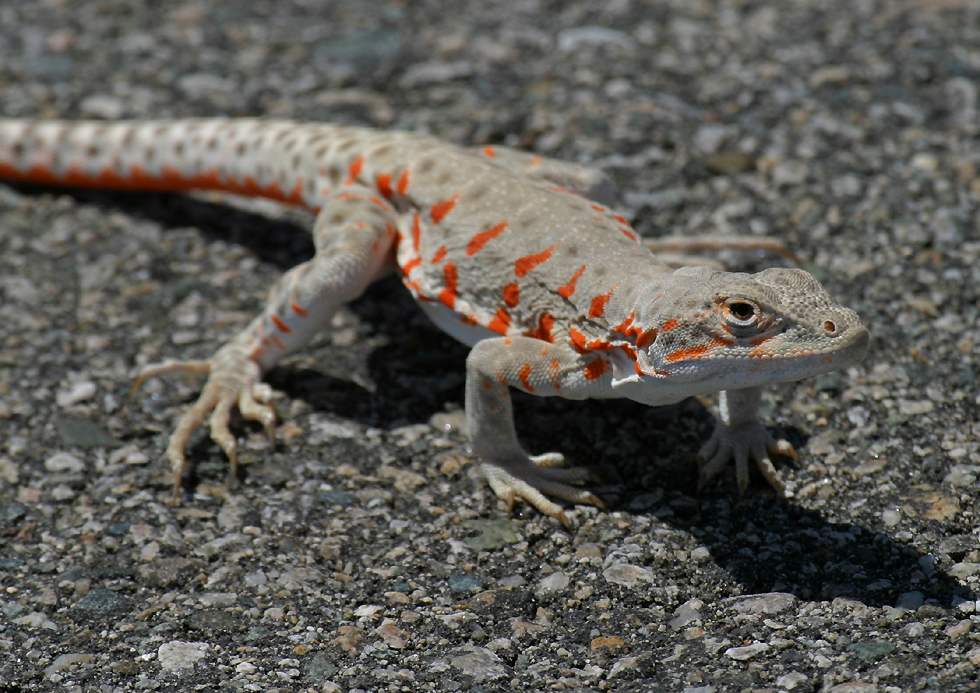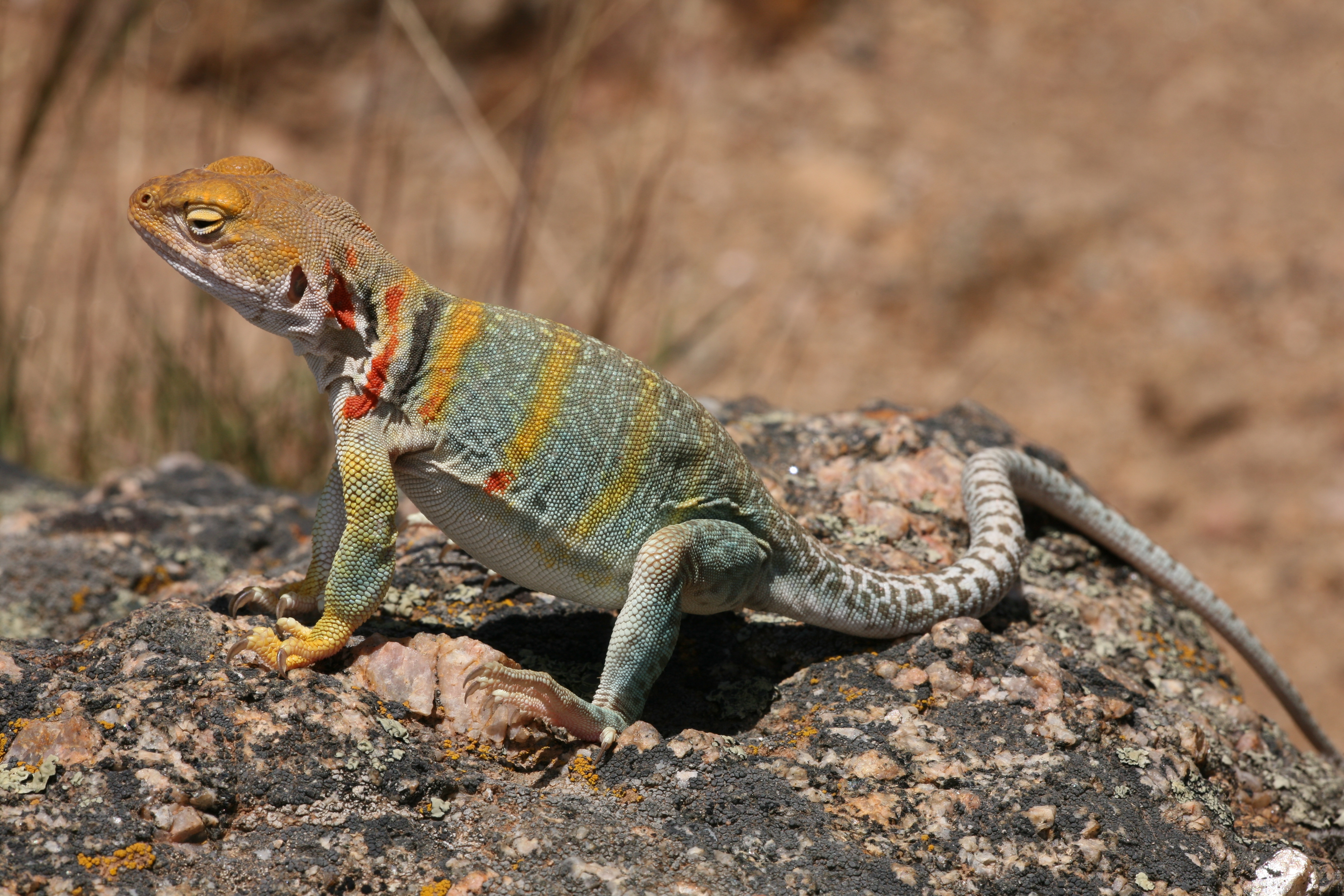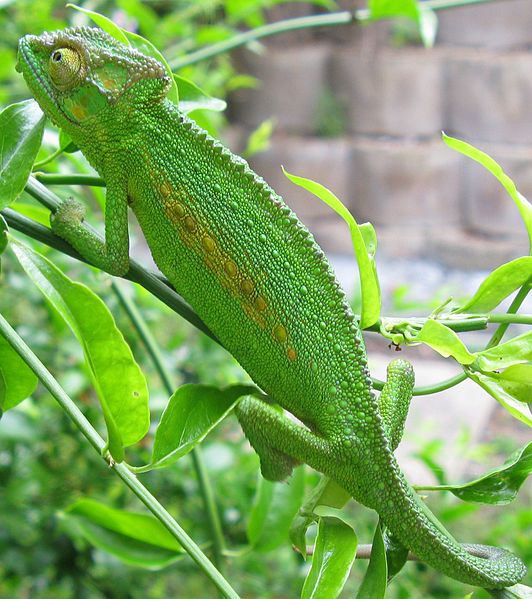Lizard

"And the ferret, and the chameleon, and the lizard, and the snail, and the mole."
These are unclean to you among all that creep: whosoever doth touch them, when they be dead, shall be unclean until the even.
And upon whatsoever any of them, when they are dead, doth fall, it shall be unclean;"
Leviticus 11:30-32

long nose leopard lizard
LIZARDS.
MOST lizards are innocent little animals, very bright and lively in their movements, but exceedingly timid when disturbed. They have a long body and a serpent-like tail, and glide about with the greatest ease.
Some of them live in holes in rocks, or crevices in stone walls, while others dwell altogether in the sand, and when disturbed dive into it and cover themselves completely. The toes of the sand lizards are very flat, and fringed on the sides, and on this account they are enabled to run over the sand with the greatest rapidity instead of sinking into it;
while the rough-toed lizards, by dint of their crooked claws, can cling to the sides
of walls and rocks.
These animals thrive best in tropical countries. In a temperate climate, as soon as the cold weather commences, they drop lower and lower, and finally sink into a lethargic state, in which they remain all winter. Their food consists principally of insects, and in warm countries they may frequently be seen in the noonday sun, busily catching them by darting out their long tongues.
Among the natives of India, the lizard is hunted down by dogs for its flesh, which is considered a great delicacy, and for its skin, which is made into shoes. These little animals are sometimes accused of eating birds' eggs, and, what is still worse, when pressed with hunger, of devouring their own ; but among the ancients, on account of the number of insects they managed to swallow, they received the title of the " friend of man." They are generally so very gentle that European children use them as playthings; but they have sometimes been known to bite when laid hold of, and they have also been known to show fight to dogs and serpents, when thoroughly aroused, inflicting some very dangerous wounds.
The most curious thing about a lizard is its tail, which is so very brittle that the merest touch will break it in two; but the little animal walks off perfectly undisturbed, leaving a piece of it wriggling on the ground. From the broken end, in a short time sprouts out another tail, which is often covered with scales differing from the rest of the body. Even if the tail be only cracked, another will start out of the opening, so that some lizards may be seen with two tails, while others have none.
Some of these little creatures are quite long-lived. One was watched for twenty years as it came out daily to take its sunbath.
Elmer Lynnde.

collard Lizard

chameleon
These are very interesting creatures to watch and to play with. Some of the ones that are not dangerous can be made tame for pets. When I was little we live in an area where there were lots of lizards of all sizes. They were mostly the kind that were gray with the pretty blue throat. My brothers and sisters and I would catch these lizards and put them in boxes and catch flies and feed them that way. Of course we had lots of fun together petting and chasing lizards and watching them catch the flies we gave them. One thing we learned about them was that you should not try to catch them by the tail. It must be a way of protection for them to leave the tail in your hand and they run off without it. And there you are with a tail in your hand and you thought you caught a lizard. But it is no bother to the lizard because he just grows another one back in its place. But we have since learned that these creatures are called by God unclean, so we do not bother thinking about catching them. Now we all can look forward to the place where all things will be clean. Heaven will be a gloriously clean place of total perfection and no one will ever get sick and the creatures will never lose a tail if you touch him. I plan to be there, how about you?

Chameleon
A LONG TONGUE.
IF your tongue were as long as your body, wouldn't you think it a long one ? Well, odd as it is, there is a little fellow, who lives in Africa, with just such a tongue, and you can't imagine how useful it is to him.
You see he is a dignified, slow-moving little fellow, and he lives on insects and such lively game. He could never catch them, and might starve to death, only that he can dart out his tongue, as quick as a flash, and as long as his body. The end of this droll weapon is sticky, and holds fast any unfortunate bug or fly it touches.
The little animal I speak of is a chameleon, and his tongue is not the only droll thing about him. His eyes are very curious. They are large and round, and stick out like big beads on the side of his head.
And the funniest thing is that he can turn them different ways, so as to see all around him. He can turn one up and the other down, or he can turn one forward and the other back, and thus see everywhere. It must be a very small bug which can escape these sharp eyes.
These eyes are covered with eyelids all the time. To be sure, there is a hole in the middle, where the bright eye looks out, and he can contract or expand it as he likes, but he can't uncover his eyes as we can.
But his tongue and his eyes are not the only odd things about him his feet are as strange as the rest. He has five toes, just as you have, though they are more like a bird's claws than like your toes. They are all long and have claws on the ends, and then they are fastened together by skin in a curious way. Three of them are fastened into one sort of bundle, and the other two into another.
You can see how nicely this arrangement enables him to hold on to the branches of trees, where he lives. All four of his feet are fixed in the same way. And, as if four such hands and feet were not enough, his long, slim tail is as good as another foot. He can curl it around a branch, as a monkey can his, and hold on with it.
Even when he walks on the ground which he does n't much like to do he steadies himself with this useful tail.
Everything about this fellow is odd. His skin is not fastened tight to him, as it is to most animals. It is more like a loose bag, and he can swell it out into queer shapes, or rather into a shapeless mass, by filling it with air. And another oddity about the skin is that, by a peculiar arrangement of the coloring matter, he sometimes looks one color and sometimes another, according to the way the light strikes him. It is something like what you have seen in changeable silks.
Strange stories were told about this curious little fellow in old times. It was really believed that he had no regular color of his own, but that he took the color of
the thing he was near, being green among the leaves and brown on the ground. That
error was caused, of course, by the changes of color I spoke of..
Another error was the effect of his curious habit of blowing himself up like a bladder. It was said that he had no particular shape. In fact, he had no character of his own any way neither color nor shape!
The wisest men of old times believed these stories? and it seems droll enough to read of it in serious, wise books. Even the name of the honest little fellow got to mean one who changes his opinions to suit everybody and has no fixed ideas of his own.
Olive Thorne.